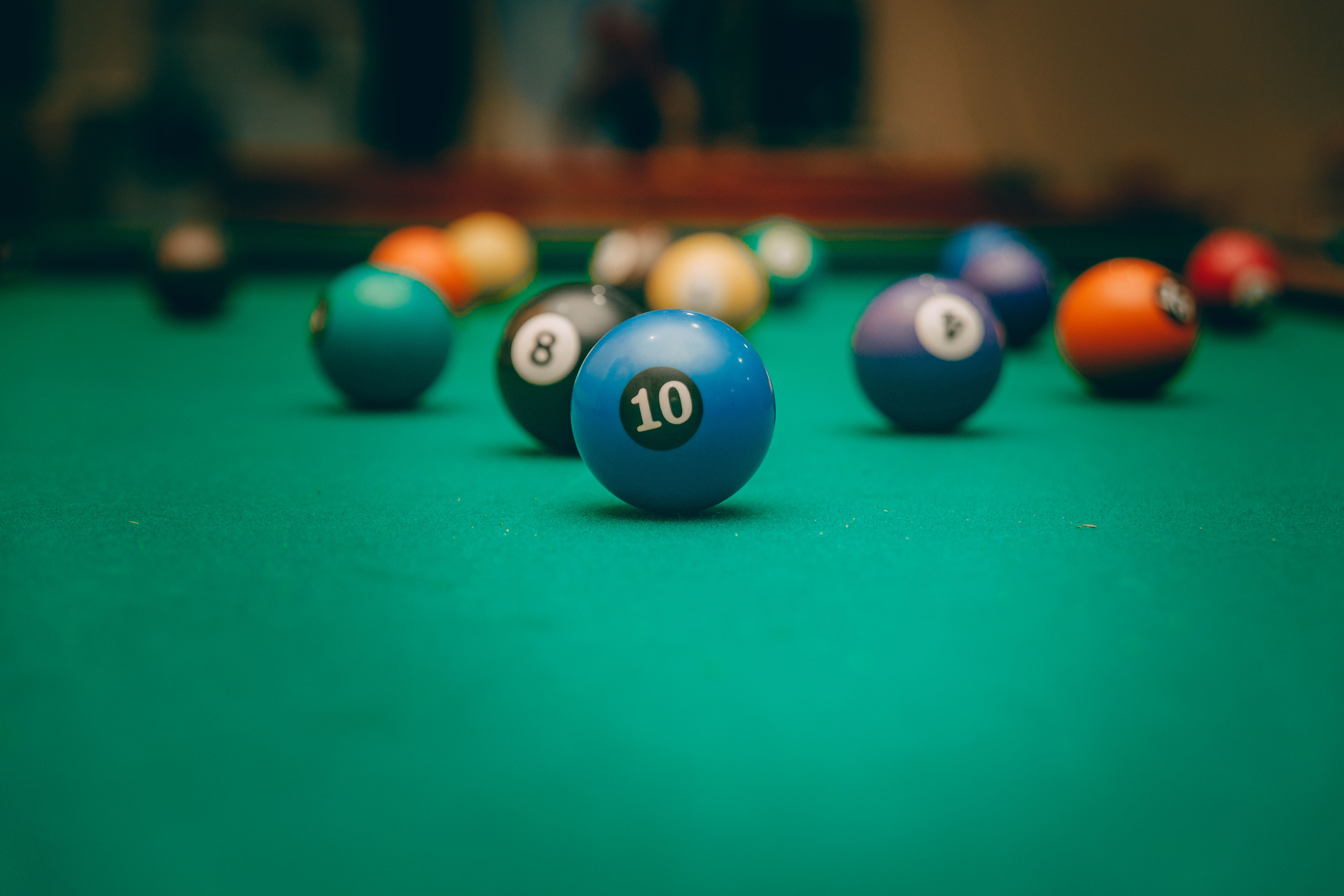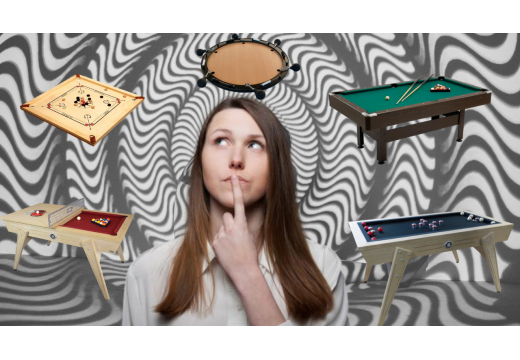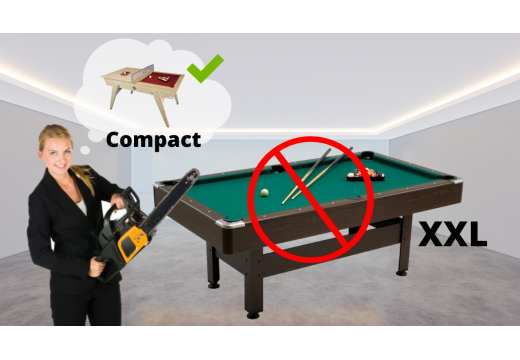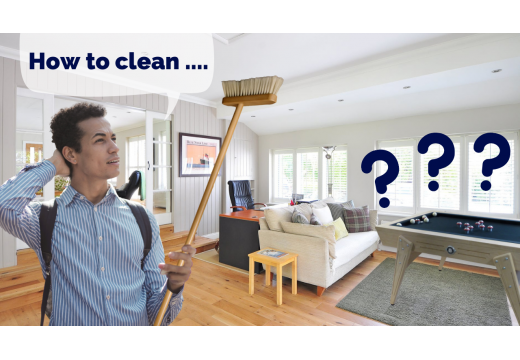- Table soccer
- Available stock
- Gift ideas
- Tradition table soccer
- Table soccer Toi & Moi 1VS1
- Outdoor table soccer
- Prestige table soccer
- Coiners
- Handisport table soccer
- Secure table soccer
- Giant table soccer XXL
- Belgian table soccer
- 24 Heures du Mans
- Collaboration Racing Club de Lens
- Table soccer spare parts
- Goodies Stella
- Accessories
- Recyclerie
- Pool table
- Spare parts
- Stella Games
- Stella House
- Customization
- Contact
Blog categories
- Table soccer and billiards news (36)
- Games rules (14)
- Maintenance of table soccer and billiards (5)
- Football Table tips & tricks (9)
- Billiard tips & tricks (15)
- Darts tips & advice (3)
- Decorating & furnishing (8)
- Collaborations & Partnerships (6)
- Foosball tournaments (12)
- Exhibitions & Events (14)
- Professional and public areas (7)
- Culture & History (6)
Search in blog
The Stella billiards primer
Billiards is not just a sport or an activity to do with friends, but a whole universe where knowledge of the vocabulary and technical terms is necessary to make the most of your table.

A
Arrow: The upper part of the cue just before the shot.
Attack: The point at which the cue tip hits the ball.
B
Backspin: A playing technique that causes the cue ball to move backwards or stop on contact with the object ball by hitting it under the centre.
Blue (or chalk): A cube of chalk to be applied to the cue ball to prevent it from slipping off the ball.
Bump: An unintended collision between two balls, preventing a pile-up.
C
Carambolage: Coming into contact with the other two balls with the cue ball.
Casin: A French billiard term for hitting the red ball so that it touches a cushion before caroming another ball.
Casser : The first shot in billiards, where the cue ball hits the triangle.
Carambole: The name of the red ball in French billiards.
Carreau: Effect allowing the cue ball to stop immediately on contact with the other ball.
Carrot: To put the opponent in a difficult position.
Coller: The placement of the ball touching the cushion or a ball.
Contact: The necessity of not moving the object ball when the cue ball makes contact.
Counter: Successive double impact of the cue ball with an object ball.
Crossing: Extending the cue shot after the cue ball has hit the cue ball.
Cue ball: A white ball that is the ball hit directly by the player.
Cushioning: The effect of the cue ball colliding with the object ball, with the cue ball being deflected.
Cushions: The sides of the billiard table made of natural rubber, allowing the balls to bounce and spin.
D
Defence: A strategy that aims to prevent the opponent from playing in a favourable situation.
Distance: Number of points to be reached to win.
Dominant : A game technique that aims to keep the opponent's balls in the direction of the corners through the impact of the balls.
E
Effect : A playing technique that gives the cue ball or any other ball a particular rotation on impact.
Elan: The distance between the cue tip and the cue ball, which varies according to the power of the cue stroke.
F
Fauchage: A lateral movement, often involuntary, that deflects the shot.
False Cue: A slippery process on impact with the cue ball due to lack of chalk. Reduces the range of the shot, the ball taking an unintended direction.
Ferrule: The ring to which the process is attached.
Flies: Points on the mat on which the balls are placed at the start.
Foul: An illegal action resulting in the point being declared void and sometimes in the loss of the advantage (or the game).
Front cushion: A billiard shot in which the cue ball hits a cushion before colliding with the object ball.
G
Goal ball: Any ball other than the cue ball.
H
Height of attack: The height of the place of impact of the cue on the ball to give the ball the desired rotation.
L
Limage: Back and forth movement to prepare for the cue stroke.
Lengthening : The extension of the cue shot on the cue ball beyond what is recommended for normal play.
M
Massé: The effect of giving a curved trajectory by attacking the cue ball at a vertical angle.
O
Object ball: Refers to the ball aimed at by the player.
P
Puffing: A technique of playing to keep the balls in a bundle by playing them softly.
Piquer: An effect that consists in attacking the cue ball vertically to make it go backwards.
Pocket: A hole in a pool table.
Pushing: A foul that consists of leaving the cue tip in contact with the cue ball after it has touched another ball.
Process: The point of contact of the cue with the balls.
Pointed ball: A ball with two coloured dots on each side.
Q
Cue: An object used to play billiards. Used to push the cue ball.
Cueing: Multiple contacts between the cue tip and the cue ball during the execution of a shot.
R
Rake: An accessory used as a resting point when the cue ball is too far away for the player to guide the cue shaft with the hand.
Recovery: The number of times a player comes to the table in a round.
S
Sinking: A technical effect that allows the cue ball to continue its trajectory after hitting the object ball. It is achieved by attacking the cue ball over its middle.
Snook : Technique de défense consistant à cacher la bille blanche derrière une autre bille avant de donner la main à l’adversaire. La conséquence de ce coup étant une impossibilité pour l’adversaire de toucher directement une de ses billes.
Straddle: The technique(s) of holding the cue by the hand to guide the cue ball.
T
Head (attack in): Attacking the cue ball on the high side.
Crossing: Extending the cue shot after the cue ball has hit the cue ball.
Related posts
-
 What type of game to choose for a pool table?
Posted in: Billiard tips & tricks27/09/2022Discover all our advices to find the billiard that suits you according to your favorite game: French billiard,...Read more
What type of game to choose for a pool table?
Posted in: Billiard tips & tricks27/09/2022Discover all our advices to find the billiard that suits you according to your favorite game: French billiard,...Read more -
 How much space do I need for my compact pool table?
Posted in: Billiard tips & tricks29/09/2022How much space do you need for your Stella compact pool table: American pool table, French pool table and golf pool...Read more
How much space do I need for my compact pool table?
Posted in: Billiard tips & tricks29/09/2022How much space do you need for your Stella compact pool table: American pool table, French pool table and golf pool...Read more -
 How do I maintain my compact pool table?
29/09/2022Wondering how to maintain and care for your Stella compact pool table? We give you our tips on cleaning the table,...Read more
How do I maintain my compact pool table?
29/09/2022Wondering how to maintain and care for your Stella compact pool table? We give you our tips on cleaning the table,...Read more
